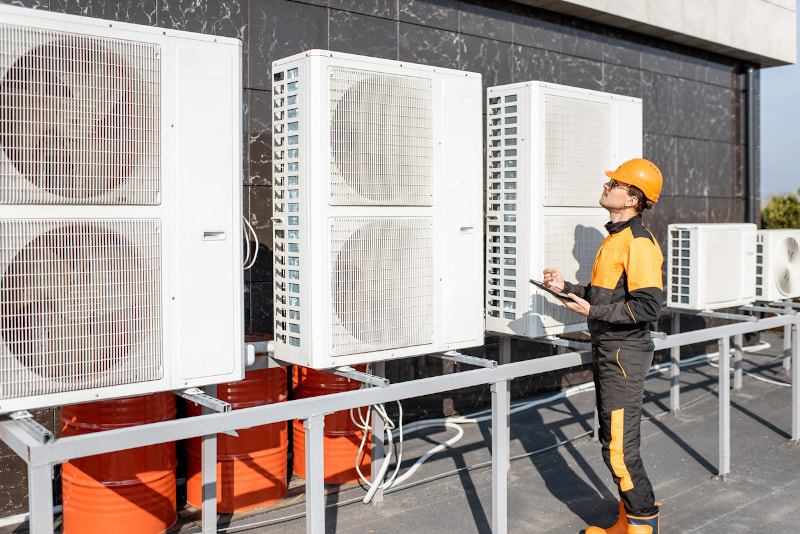As a commercial property owner in Milton, FL, you occasionally need to use heat to keep your customers/clients and employees comfortable and safe. However, you don’t want heating bills to be a big surprise at the end of the month. That’s why we’ll go over seven steps you can take to reduce commercial heating costs.
1. Schedule a Heating System Inspection
Buying and installing a commercial heating system is expensive, but you can reduce the risk of needing a new one with an annual inspection. We’ll identify any simple or major repairs the system needs and recommend a maintenance plan to keep the system in check. You generally need HVAC maintenance at least twice a year.
Technicians who provide maintenance for commercial heating systems come with a checklist of things to look for and do. They’ll check all of the electrical connections and the heat exchanger, go over the thermostat to ensure it works properly with the system, inspect the ductwork in the commercial building and verify that the system has enough refrigerant. Our technicians can also confirm the system doesn’t have any leaks, as leaks can lower the efficiency of your unit.
2. Switch to a Smart Thermostat
Like programmable thermostats, smart thermostats let you set schedules for every day of the week. However, they also give you easy remote access, energy usage reports and more. Many thermostats will even send you alerts when they detect problems.
3. Request an Energy Audit
Contact a local company or call your power provider to request an energy audit. This is a full survey of your commercial building that looks for heat loss and determines how well the building conserves energy. It usually only takes a few hours.
At the end of the audit, you’ll receive a full copy of the report that states where you lose heat and how well the building performs. This helps you see what you can do to improve the building’s heat conservation and cut down on costs. The audit can also reveal any work on the building that isn’t up to code, which lets you know what changes to implement to improve safety.
4. Add Revolving or Automatic Doors
Standard doors allow your heat to escape every time a customer or worker opens them, but they also allow some of the cold air to get inside. Revolving or automatic doors, or double doors like a vestibule cut down on heat loss and can make your system last longer.
5. Replace or Repair Windows
Commercial buildings often have large single-pane fixed windows. While they work fine, any damage to the seals around the glass leads to heat loss. Consider replacing them with double-pane windows or repairing the seals and using weatherstripping.
6. Increase the Insulation
Buildings of all types often use insulation that locks heat inside. If a commercial property doesn’t have enough insulation, some of the warm air can escape through the walls, ceilings or floors. You’ll find different types of insulation, such as rolls and blow-in styles.
Blown-in insulation is easy to install because contractors make a small hole in the wall and use a machine that lets them add the right amount of insulation through the opening. Rolled insulation works just as well, but it requires removing walls or opening the floors or ceiling to lay it down in sheets. A professional contractor will go over your options and help you pick the best type of insulation for your property.
7. Know When to Replace the System
HVAC systems have a lifespan of 15 to 25 years, some even longer depending on the type. Signs of systems nearing the end of their lifespan include making loud noises, needing frequent repairs and not regulating the building’s temperature. A new system might be the best way to save on your commercial heating costs.
These are just some steps you can take to cut your commercial heating costs, but nothing works better than finding a professional. Get more help when you contact Lunsford Air Conditioning & Heating in Milton, FL for heating repairs.
Image provided by iStock




